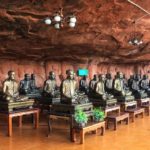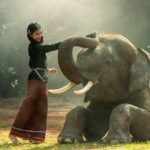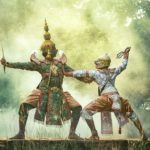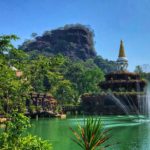
The Mythological Kala – Scary Faces at Khmer & Thai Temples
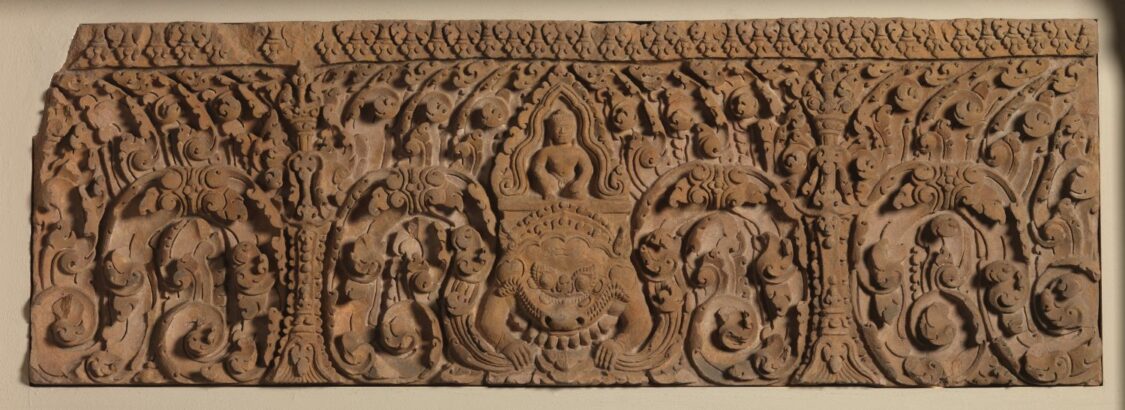
Seen above: A well preserved lintel with carved face of Kala, from an 11th century temple in Thailand (about the same time Phra That Dum was built).
The demon-like figure Kala (กาล) is found in ancient Khmer temple art and Hindu-Buddhist iconography throughout Southeast Asia. However, it is one of the lesser known mythological figures among visitors to Thailand’s Khmer era ruins, such as Phra That Dum (พระธาตุดุม) in Sakon Nakhon, or more modern Thai temples like Wat Siri Mangkla Tao Ngoi (วัดศิริมังคละเต่างอย).
The concept of Kala originates from Hindu mythology, where he often appears as a ferocious deity or a monstrous creature embodying time, death, and destruction. Kala’s representation in Khmer art reflects the hybrid nature of Khmer culture, which blended elements of Hinduism and Buddhism.
In Khmer art, Kala is typically depicted as a scary face with a gaping mouth, protruding tongue, and sharp teeth (or fangs). He often is portrayed as devouring everything in his path, symbolizing the relentless passage of time and the inevitability of death. At a Thai temple or Khmer ruin in Thailand, his frightening face will usually appear above a doorway that leads to the sacred inner chamber of a prasat or pagoda. As you pass under the Kala, this symbolizes your entrance into a timeless, eternal sacred space where Kala no longer reigns.
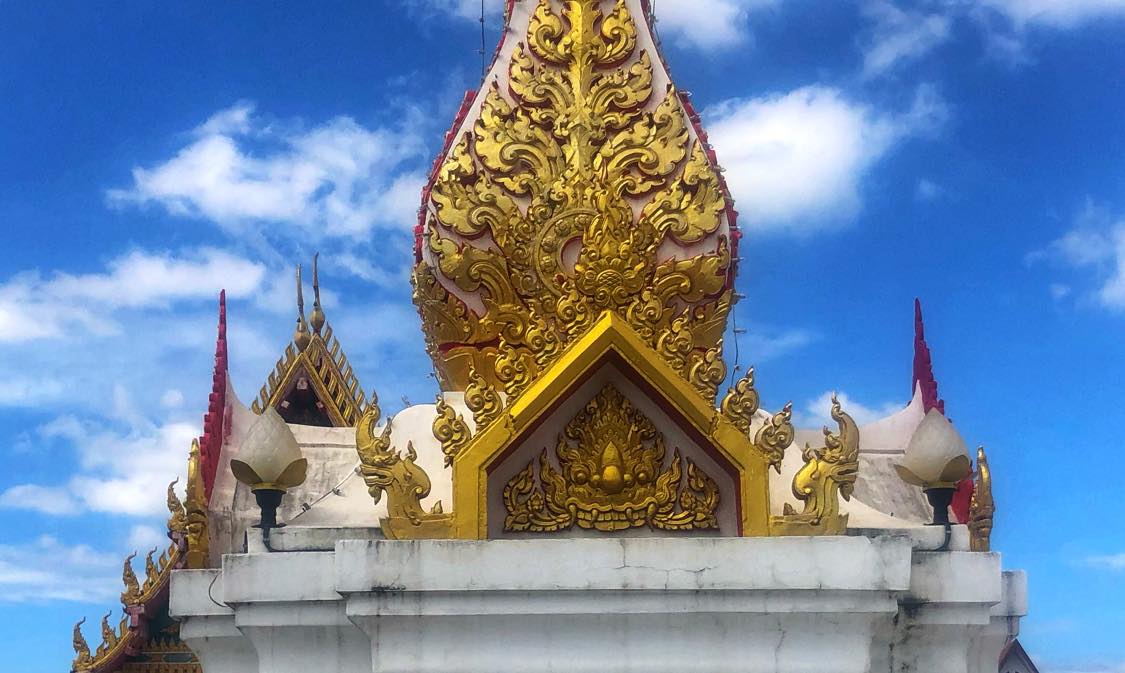
Despite his fearsome appearance, Kala is not inherently malevolent; rather, he is seen as a necessary force in the cycle of existence, representing the transient nature of all things in the outer world. Kala sculptures and reliefs serve as a reminder of the impermanence of life and the importance of spiritual devotion.
Note that there is another figure who sometimes appears above a doorway at Thai temples who should not be confused with Kala. This is the figure of Phra Rahu attempting to swallow a sun or moon. Phra Rahu was cut in half by Vishnu for stealing a potion that would have granted him immortality. Thais also believe he was assigned the duty of protecting Buddhist spaces, which is why his scary face appears near the entrance to some Thai temple buildings.
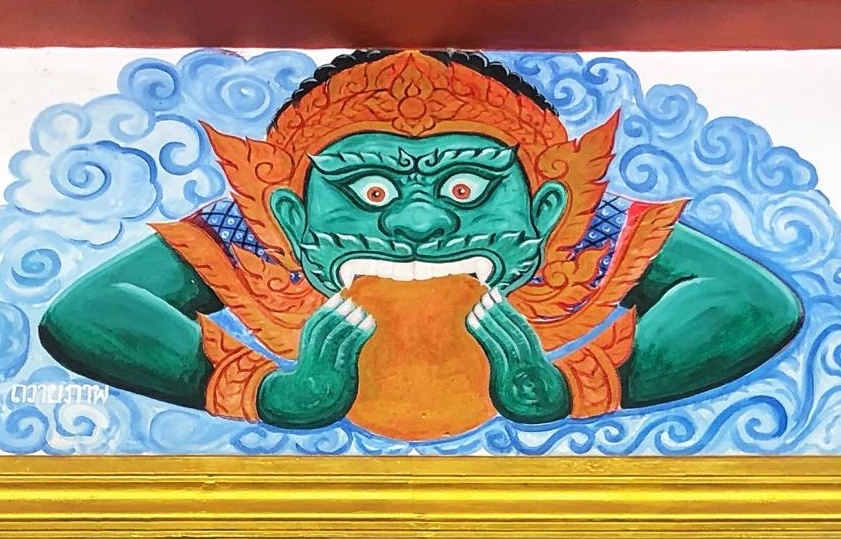
In some representations, Kala is depicted alongside other mythological figures such as Garuda, Naga, and Vishnu, emphasizing his significance within the broader Hindu-Buddhist pantheon. He also bears some similarity to Kala Bhairava, the God of Destruction, who is worshiped in countries like Japan, Indonesia, and Sri Lanka. However, Kala Bhairava is depicted frequently standing, with four arms that are holding a drum, noose, trident, and skull.
The presence of Kala in Khmer art reflects the deep influence of Indian religious and cultural traditions on the Khmer Empire, which flourished in present-day Cambodia and most of mainland Southeast Asia between the 9th and 15th centuries. Despite the decline of the Khmer Empire and the spread of Theravada Buddhism in the region, the iconography of Kala continued to endure in both Cambodia and Thailand, demonstrating its enduring significance the cultures and religious practices of both countries.
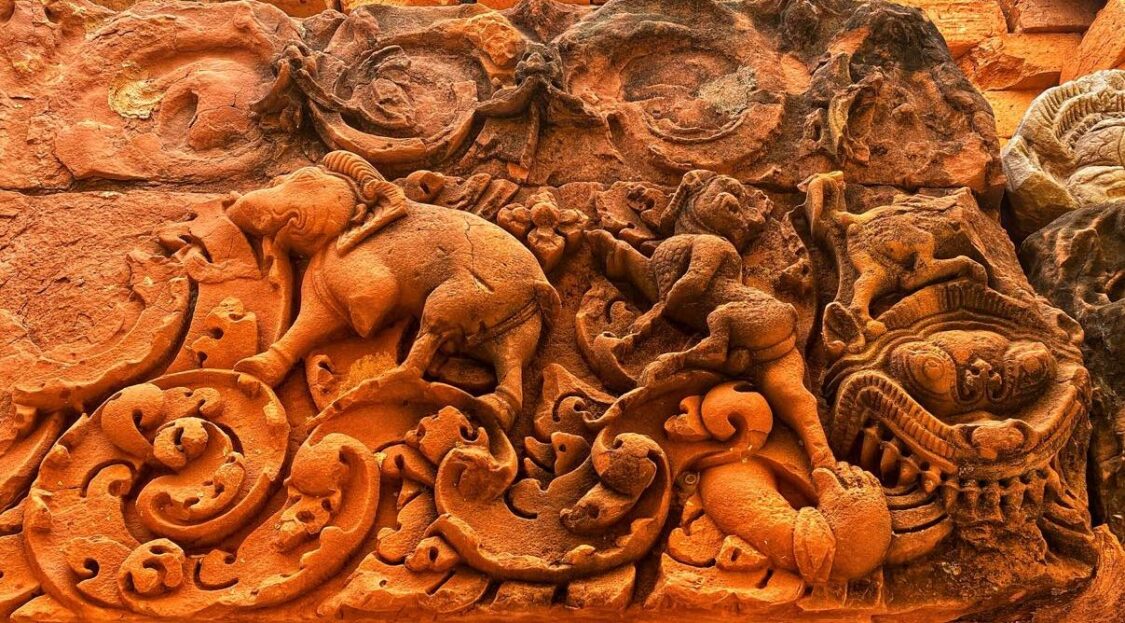
The Kala Figure at Wat Phrathat Dum
A scary face of Kala was carved into the north-side lintel (support beam) of a bricked-up entrance at the Phra That Dum ruins in Sakon Nakhon city. He is flanked by scrolls of leaves, elephants, and a Singha lion. Only a partial image of an animal appears above his head, as well as an outline of what looks to have been a figure riding the animal. The animal does not look to be the half man/half bird Garuda who carries Vishnu, but looks more like the bull (named Nandi) who carries Shiva, the God of Destruction in Hinduism. His appearance on the lintel would make sense, since Kala is also an embodiment of time’s destruction.
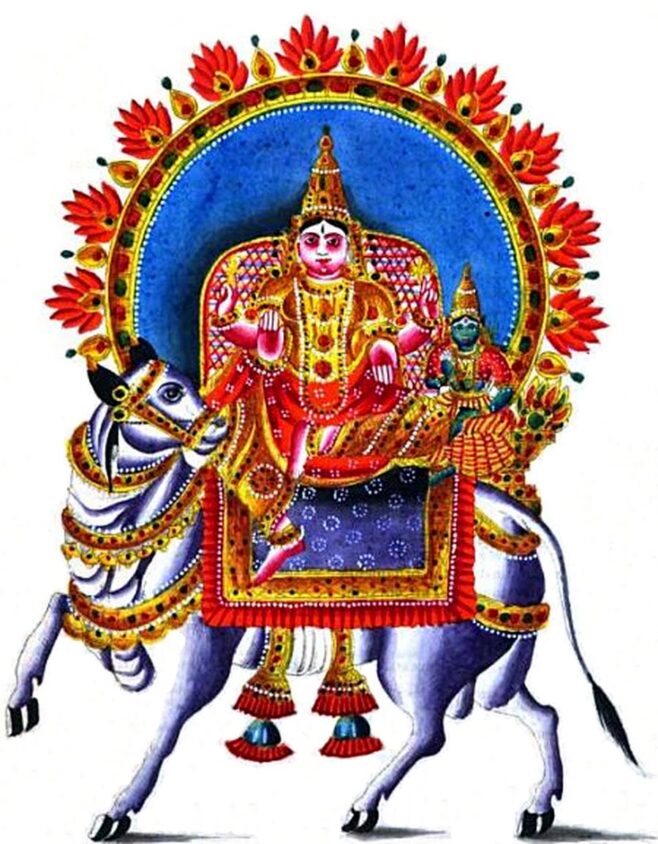
- The Hidden Dharma of Thai Language & Culture - May 11, 2024
- The Royal Ploughing Ceremony in Thailand – A History - May 8, 2024
- Dying Well the Buddhist Way in Thailand - May 7, 2024

